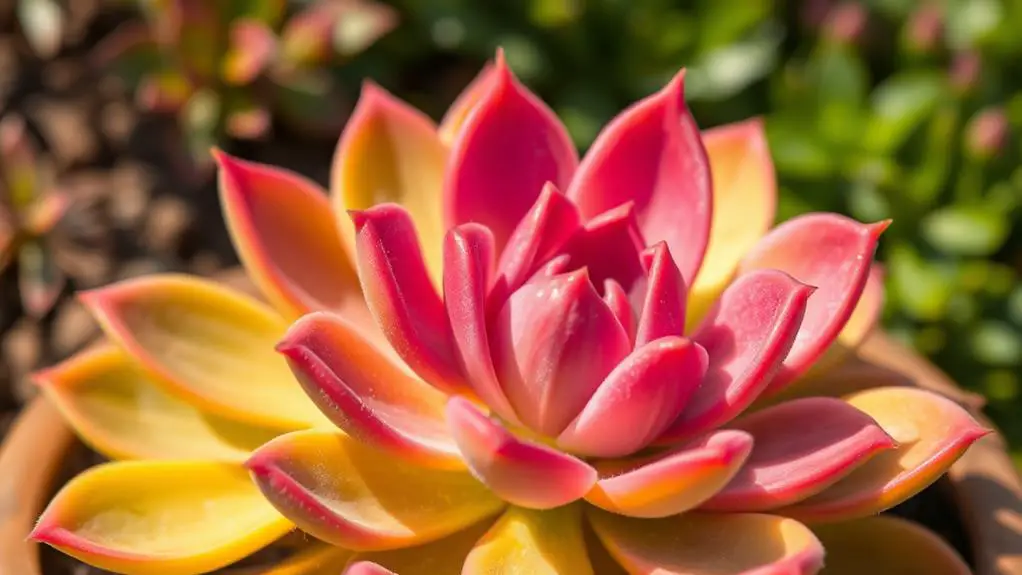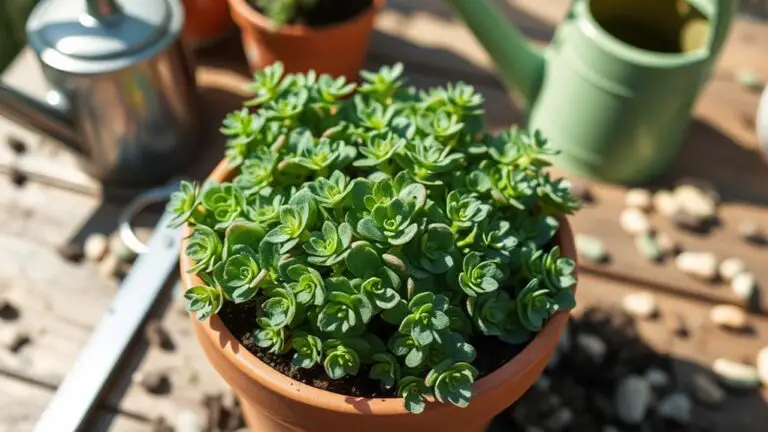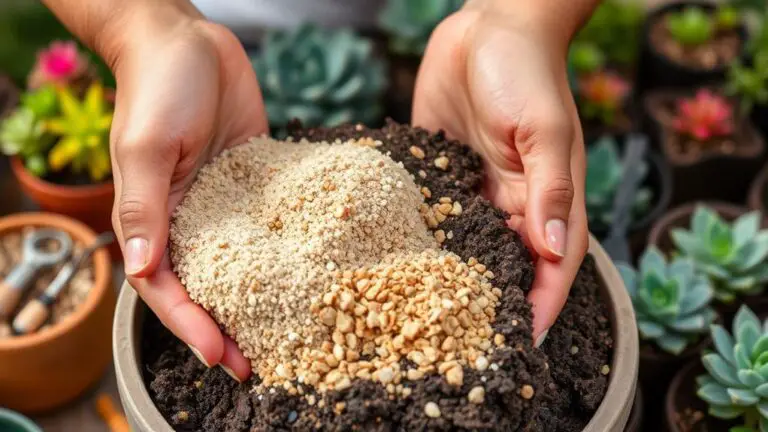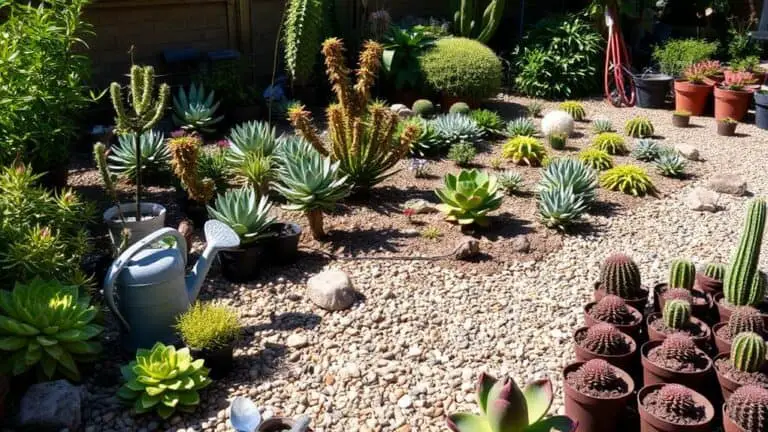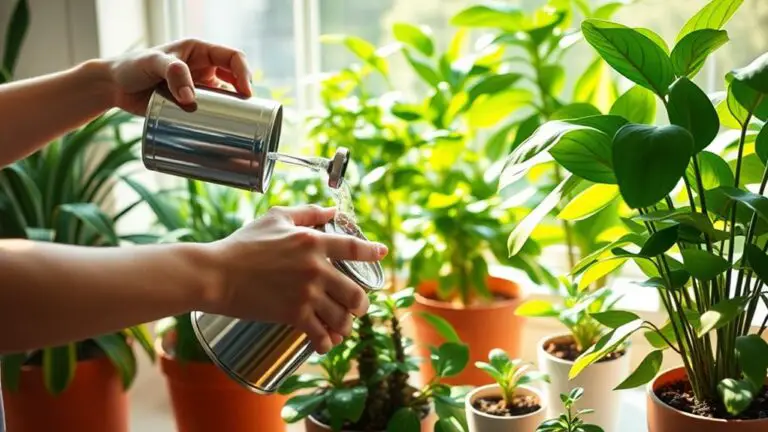Why Did My Succulent Change Colors?
Have you noticed your succulent changing colors recently and wondered why? This shift can be attributed to several factors such as watering habits, sunlight exposure, and temperature changes. For instance, overwatering might cause your plant to turn greener, while adequate sunlight can enhance its vibrant hues. Cooler temperatures, especially in winter, can also intensify certain pigments. Understanding these elements is essential for maintaining the beauty of your plant. Curious about how to keep your succulent looking its best? Let's explore the key aspects of succulent care and what you can do to optimize its colorful allure.
Watering

How does watering impact the color of your succulents? When it comes to succulents, how you water them can make a big difference in their appearance.
Overwatering is a common issue that can cause your succulents to lose their vibrant colors, turning them into a dull green. If you notice your succulents' color fading, it might be because they're getting watered too often.
Generally, succulents watered weekly tend to have greener foliage. This greenness indicates they might be receiving too much moisture. To bring back those rich, beautiful tones, you might want to try watering them less frequently.
Testing a bi-weekly watering schedule can help enhance their color vibrancy, making the margins and tips more striking.
Dry conditions are actually beneficial for colorful succulents. When the soil stays dry longer, succulents develop more vivid coloration.
Sunlight
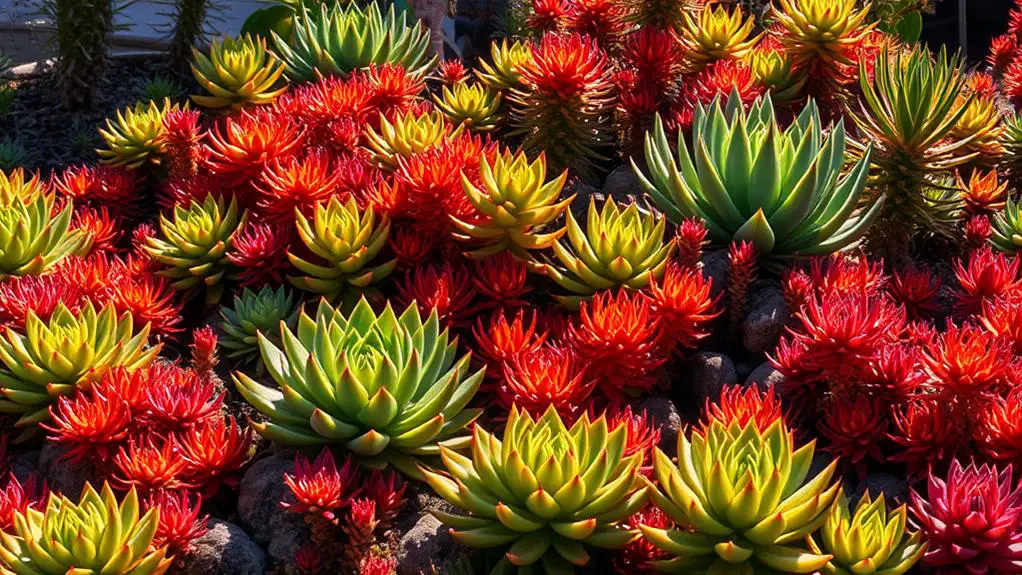
Sunlight plays an essential role in the coloration of your succulents. These plants need at least four hours of direct sunlight daily to maintain their vibrant colors. Without enough light, you might notice your succulents changing color, often turning a duller green. This happens because they produce more chlorophyll to capture as much light as possible, leading to a lighter green appearance.
On the flip side, when succulents get plenty of strong sunlight, they can develop beautiful red or purple hues. This color change is a protective adaptation to light stress.
However, you should be cautious about the intensity of the sunlight. Direct morning sunlight is ideal because it's strong enough to encourage healthy color changes without being too harsh. Afternoons can be tricky since excessive sunlight during this time can cause sunburn and damage to your plants.
To help your succulents adjust, gradually shift them to full sun conditions. This slow change helps prevent shock and promotes healthier color changes.
Temperature
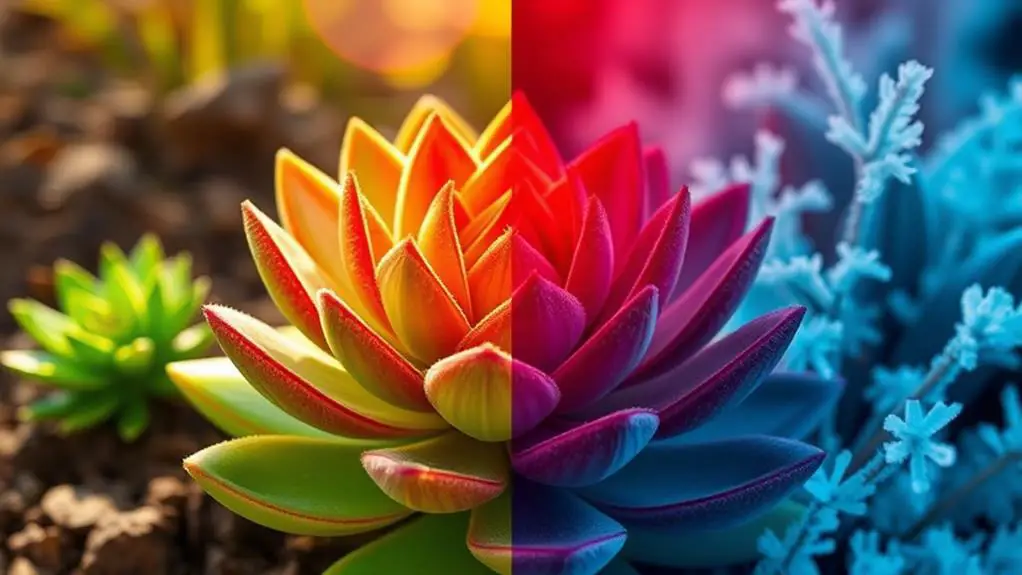
Besides sunlight, temperature also plays an essential role in the color dynamics of succulents. When temperatures drop between 40-70°F, your succulents might surprise you with bright colors. This phenomenon, known as temperature stress, can make your plants appear more vibrant and stunning.
For example, pink varieties of succulents often show their most intense colors during the cooler winter months.
As spring and summer bring warmer temperatures, you might notice your succulents' colors becoming more muted. This is a natural response to the heat. The change in temperature can cause the bright colors to fade, giving your plants a more subdued look.
However, don't worry! This shift is temporary and part of the plant's adaptation process.
Specific species, like Euphorbia Sticks on Fire, are known to change colors based on temperature variations and sunlight exposure. Cooler conditions can enhance the succulent color, making your garden more colorful and lively.
Color Variability
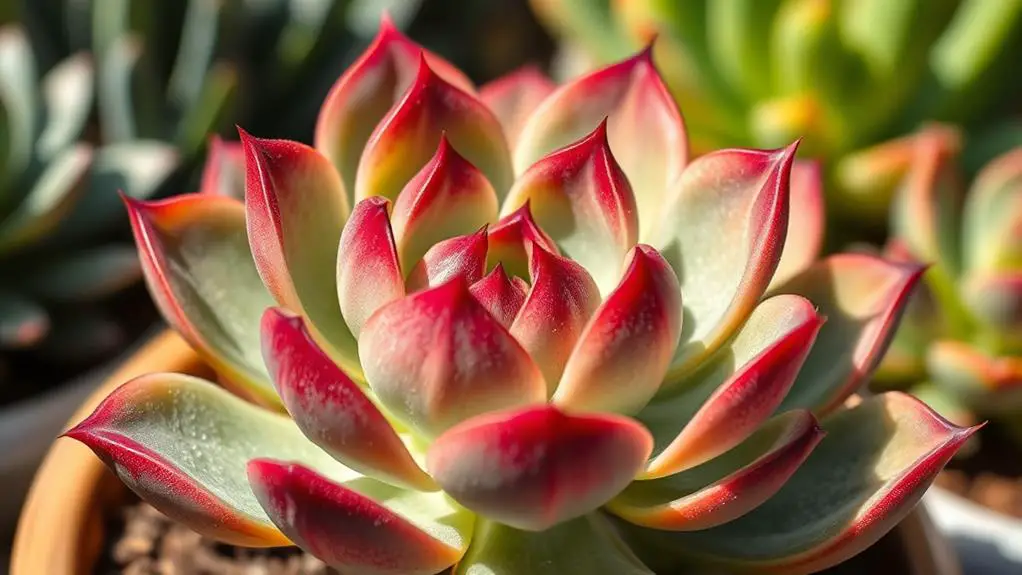
When it comes to succulents, color variability is one of their most fascinating traits. You might notice your succulent's colors changing dramatically based on environmental conditions like light, temperature, and water availability. These shifts can be especially pronounced during changing months when the climate changes. For instance, your succulent might show off vibrant colors during the spring and fall.
Light stress is a significant factor in these color changes. When succulents are exposed to more intense light, they often develop brighter hues. This stress isn't harmful in moderation; it's a natural response that enhances their pigments. So, if you see your succulent turning red, purple, or orange, it's likely reacting to the light.
Some species, such as Euphorbia Sticks on Fire, are particularly responsive to light and temperature variations. You'll notice their colors becoming more vivid in favorable conditions.
However, if your succulent starts to look greener, it might be a sign that it's not getting the best conditions it prefers. This adaptability is part of what makes succulents so resilient and intriguing.
Understanding these factors can help you appreciate the dynamic beauty of your succulents even more.
Care Tips
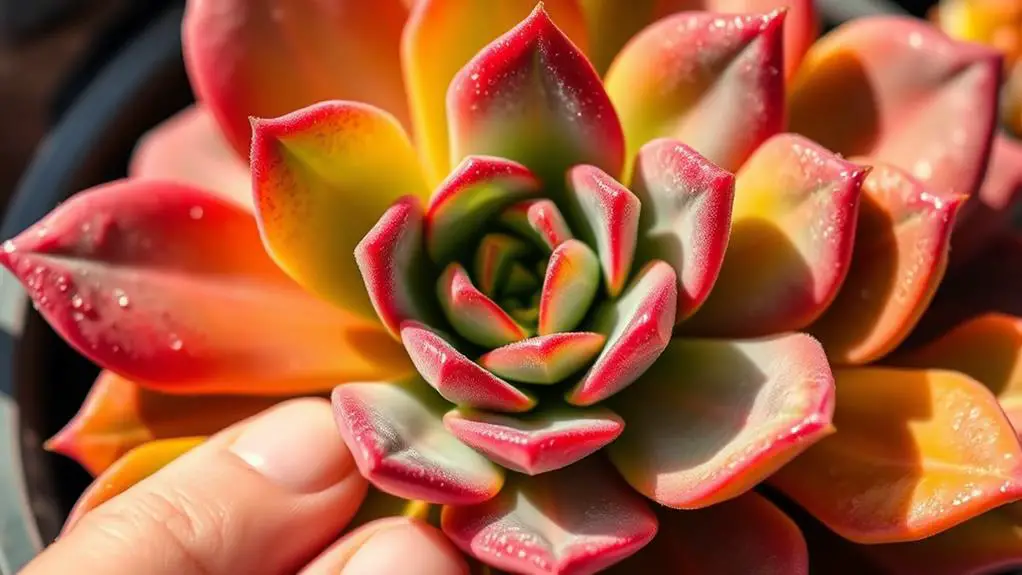
To keep your succulents vibrant and healthy, it's essential to follow a few key care tips. Proper care helps maintain their beautiful colors and guarantees they thrive. Here are some practical tips to get you started:
- Monitor your watering frequency: Overwatered succulents often lose their vibrant colors and turn greener. Make certain the soil dries out completely between waterings.
- Provide plenty of light: Succulents need at least 4 hours of direct sunlight daily. This light exposure prevents greening and promotes vibrant pigmentation.
- Encourage slight underwatering: Letting the soil dry out can stress your succulents just enough to enhance color changes. This is a natural way to intensify their pigmentation.
- Create temperature variations: Exposing your succulents to cooler conditions, between 40-70°F, especially in winter, can encourage richer colors.
- Regularly assess for light stress: Look for signs like fading or stretched growth. Adjust their light exposure to maintain peak color vibrancy.
Frequently Asked Questions
Why Is My Succulent Changing Colors?
Your succulent's color change is likely due to factors like sunlight, water, or temperature. Make certain it gets enough light, avoid overwatering, and consider temperature variations. Seasonal changes also play a significant role in how your succulent looks.
Can Succulents Get Their Color Back?
Yes, your succulents can get their color back! Increase their sunlight exposure to at least 4 hours daily, reduce watering frequency, and gradually shift them to brighter light over 1-2 weeks. Cooler temperatures also help enhance vibrancy.
Why Did My Succulent Turn From Green to Purple?
Your succulent turned from green to purple due to factors like increased sunlight, cooler temperatures, or underwatering. These conditions stimulate the production of protective pigments, causing the color change as the plant adapts to its environment.
How Do I Get My Succulents to Turn Green Again?
You can get your succulents to turn green again by gradually increasing their sunlight exposure, adjusting watering frequency, and ensuring proper drainage. Additionally, monitor ambient temperatures and regularly assess their health to maintain a stable environment.
Conclusion
So, if your succulent's colors are changing, don't worry! It's likely due to watering, sunlight, or temperature changes. By adjusting these factors, you can help your succulent regain its vibrant hues. Give it enough light, avoid overwatering, and be mindful of temperature shifts. With a little care and attention, your succulent will thrive and look beautiful again. Keep experimenting and learning—you're doing great, and your plants will thank you!

